Pool chlorine ensures the pool is safe for swimming. But what if you don’t want chlorine in your pool?
Are there alternatives to use? How much do these alternatives cost to run? And do they clean the pool as well as chlorine?
The answers to all these questions and more will be revealed in this post. So let’s dive in.
Article Contents
5 Alternatives To Using Chlorine For Pool
Here are the top 5 alternatives to use in pools instead of chlorine:
- Bromine
- Salt-water system
- Ozone generators
- Non-chlorine Shock
- Mineral System
But how do you know which option to pick? Let’s check out these alternatives, their installment and running costs, as well as pros and cons.
Before you do, there are a number of myths and dangers when it comes to pool chlorine, you can check them out here:
Too Much Chlorine in Pool: The Dangers & How to Lower
1. Bromine Pool
Bromine is a chemical used in sanitizing pools. Unlike chlorine, bromine only comes in tablet form. The tablets are used in the pool through a bromine feeder.
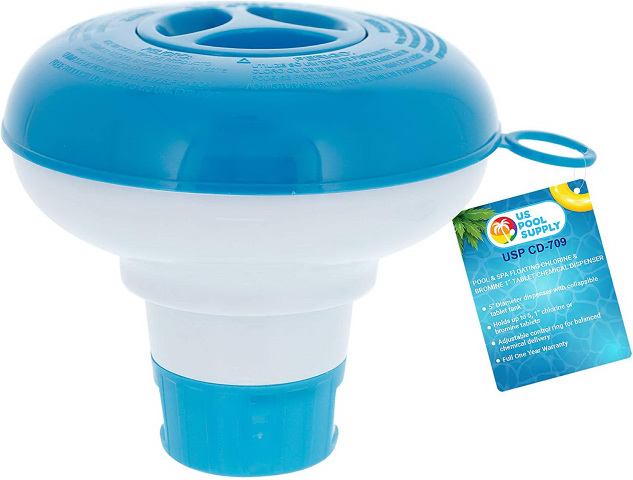
Click here to check the price >>
Bromine is popular for its gentler nature on the skin, eyes, and hair. This makes bromine common amongst pool owners with sensitive skin.
However, the gentler nature comes at an extra cost since bromine is costlier to run than chlorine. Bromine is also very stable and can remain balanced for days without frequent testing and readjusting.
As an added feature, bromine is more-resistant to the sun’s UV rays than chlorine, however, it can’t be stabilized like chlorine can with cyanuric acid, so it will still deplete quickly under the sun.
Bromine is more stable at higher temperatures than chlorine which is why it’s used for indoor swimming pools, hot tubs and spas.
When bromine fights off those nasty bugs, you are left with Bromamines, chlorine produces Chloramines.
Bromamines do not produce any offensive odor or itchiness. Unlike Chloramines that need to be destroyed, bromamines can be shocked to reactivate bromide ions which will sanitize the pool.
So how much do bromine tablets cost to buy? Let’s find out.
The Cost of Bromine
Bromine is not costly to install. In most cases, all you need is a bromine feeder and bromine tablets. Spa Choice 3-pound bromine tablets cost less than $55.
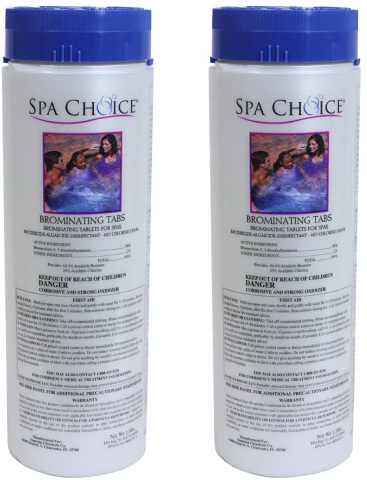
Click here to check the price >>
Floating pool tablet feeders cost less than $10. However, it’s advised to use an automatic bromine feeder to dispense the bromine better.
Pentair automatic bromine feeder costs less than $100. You’ll also need pool test strips to test sanitizer levels. JNW pool test strips costs around $20.
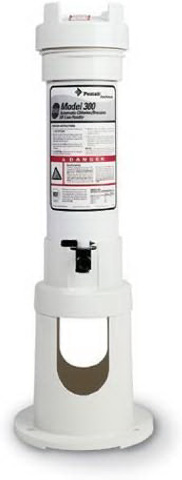
Click here to check the price >>
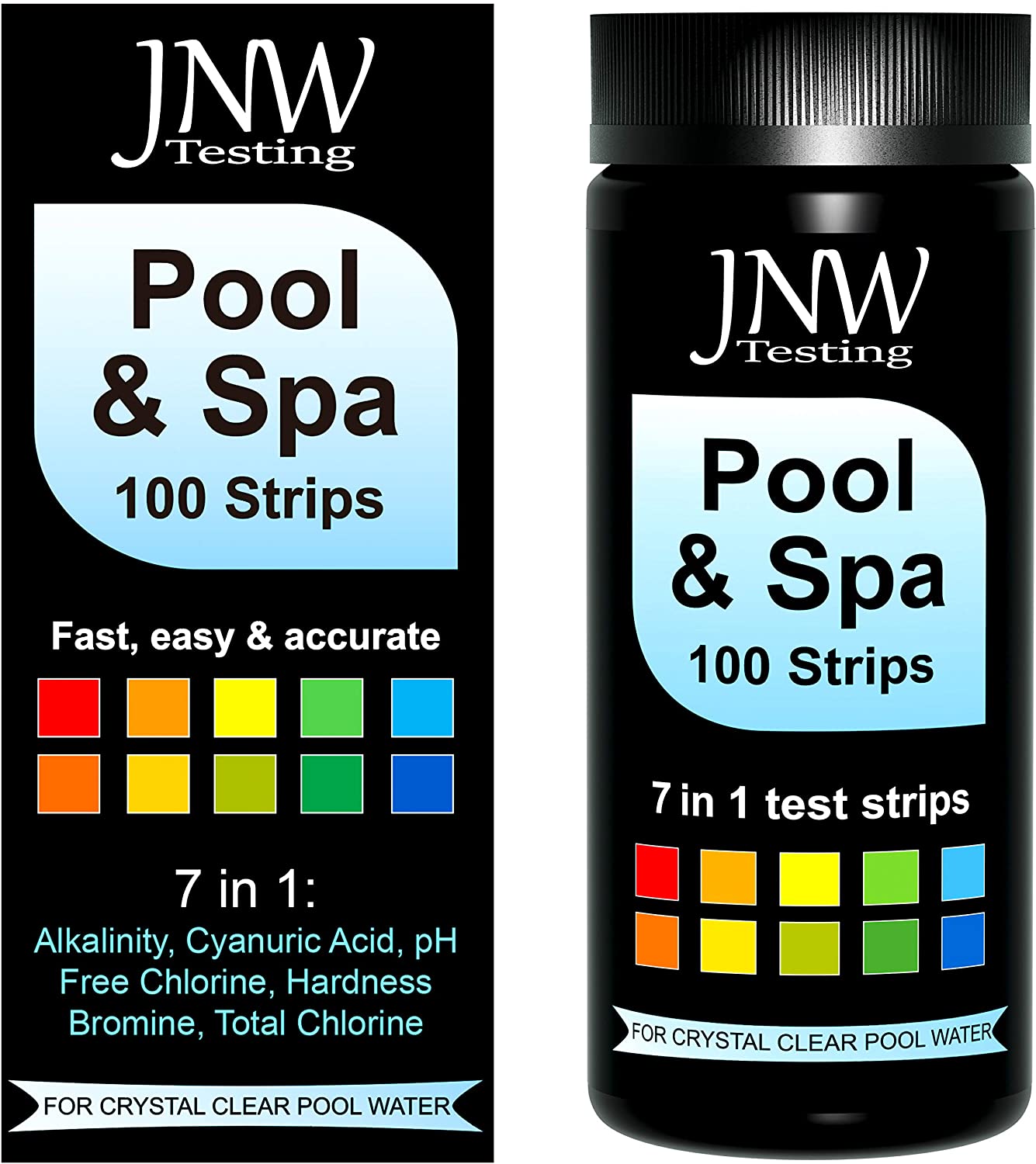
Click here to check the price >>
So on average, bromine tablet installation shouldn’t cost you up to $200.
But that’s usually the initial cost, how much does bromine cost to run?
How Much Does Bromine Cost To Run?
Bromine tablets cost a bit more to run than chlorine but work out about the same or cheaper for spas, hottubs and indoor heated pools.
Bromine levels need to be kept between 3 and 5 ppm. To keep this level of bromine, you’ll need about 340 grams per 10,000 gallons of water every week.
The Spachoice 3-pound bromine tablets contain 1,360 grams of bromine. Since you need 340 grams per week, it means under regular pool use, the 3-pound bromine tablet will last you for 4 weeks (1 month).
This is an estimated cost of $13 every week and $50 per month. Chlorine on the other hand will cost you half of that – except for hottubs, spas and pools heated to high temperatures. You’ll need a lot more chlorine than usual in this case.
The HTH 5-pound chlorine tablets costs around $80.
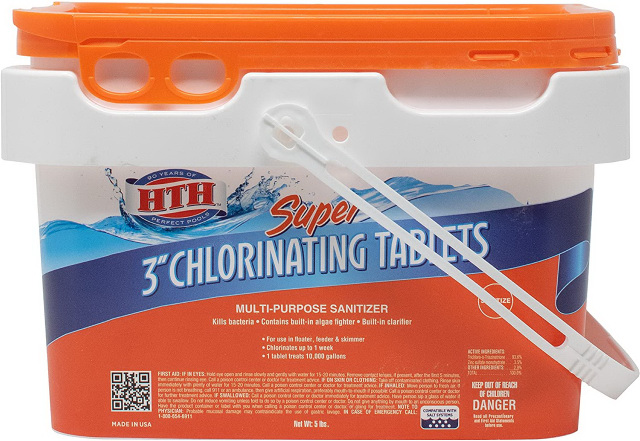
Click here to check the price >>
You need to keep the chlorine levels in your pool between 1 and 3 ppm. To keep this level of chlorine, you need one tablet of HTH chlorine for 10,000 gallons of water.
One chlorine tablet weighs 8 ounces. There are 80 ounces of chlorine tablets in 5 pounds. So going by the same calculation, a 5 pound HTH chlorine tablet pack will last you 10 weeks.
Since the 5 pound HTH chlorine tablets costs around $78, that’s $78/10 weeks = $7.80 per week running cost of chlorine.
Pros of Bromine
- It is great for indoor pools, spas and hottubs
- It’s gentler on the skin, hair, and eyes
- Resistance to UV rays
- Bromamines doesn’t produce odor
- Bromine is less likely to alter pool water chemistry
Cons of Bromine
- It is expensive
- Bromine is not as effective as chlorine
Now that you know all these, can you convert your chlorine pool to bromine?
Can You Convert Chlorine Pool To Bromine?
You can convert a chlorine pool to bromine and it’s super easy to do. When bromine is used in a chlorine pool, the bromide ions convert chlorine in the pool to bromide ions. It’s like a zombie infection.
Since the bromine will convert chlorine to bromine, this means you can add bromine without any problems or extra running costs asides from the cost of the bromine tablets and bromine feeder.
Related Reading: Chlorine Vs Bromine for Hot Tubs (Which is Better?)
2. Saltwater System
Saltwater is commonly used in place of chlorine sanitizer and is a nice alternative to chlorine.
Pool salt is added into the pool by pouring large bags of salt into the water. The salt water is then fed into a salt water cell chlorinator which uses a process called electrolysis to charge the salt and convert it to chlorine.
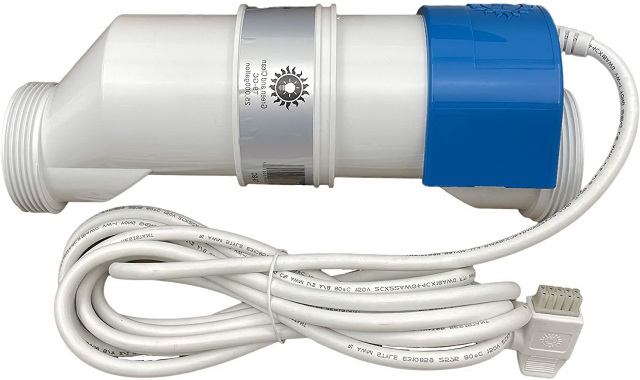
Click here to check the price >>
The chlorine is then fed into the pool where it sanitizes and cleans the water.
Salt systems produce pool water that is softer and gentler on the skin. This is because salt naturally reduces the calcium hardness of pool water.
In addition, salt systems reduce the risk of chloramines or ammonia build-up because the chlorine is constantly present in the pool. And since the salt cell is constantly generating chlorine (about 1 lbs liquid chlorine equivalent per day), these pools rarely need shocking and are less likely to have algae outbreaks.
The Cost of Salt System
The installment cost of salt system is split between the cost of the salt cell chlorinator, the cost of the salt, and the cost of labor paid.
First, you need to decide on the type of salt cell chlorinator you want in the pool. There are two types of salt cell chlorinators; in-line and drop-in chlorinator.
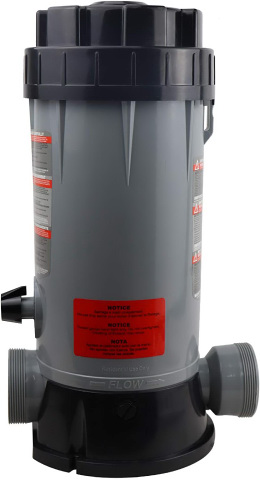
Click here to check the price >>
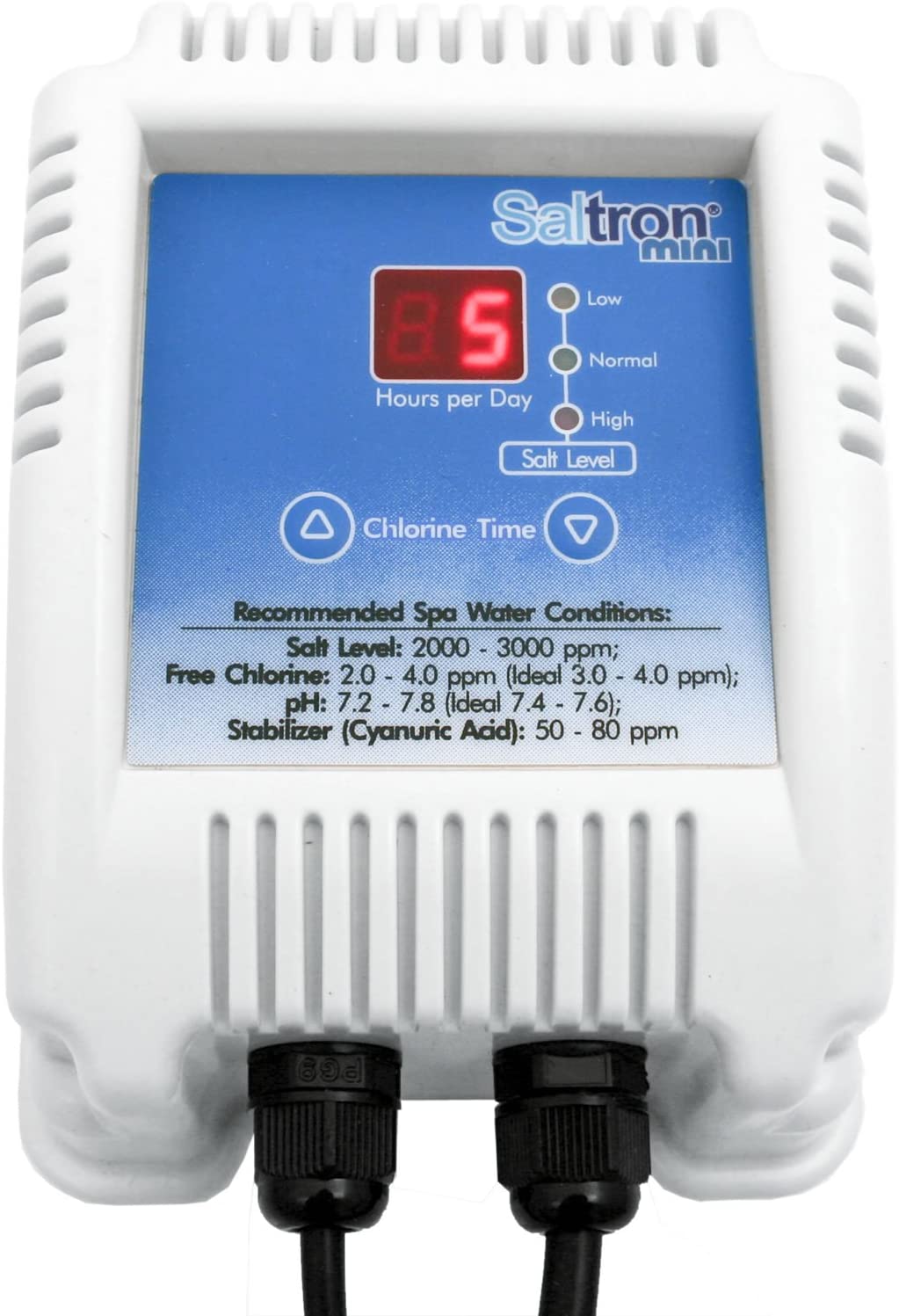
Click here to check the price >>
In-line salt cell chlorinators are usually fixed into the pool plumbing while drop-in chlorinators are dropped directly inside the pool water.
On average, expect to pay $500 for the salt cell chlorinator. This salt cell chlorinator can be used in pools up to 25,000 gallons and it costs around $400.
Pool salt is sold in bags and you can get up to 40 pounds of salt for around $10. Cheap right? Yes it is.
But that’s not all. You’ll have to pay a professional to install the salt system. Most will charge you per hour and the cost per hour depends on where you live. But in most cases, the labor cost is usually under $100.
So overall, you can expect to pay about $600 for salt system installation in small pools and about $1000 in larger pools.
What about the running cost?
How Much Does Saltwater Pool Cost To Run?
Salt systems do not cost much to run. All you need is the cost of the salt, which for the record is cheap. $10 of salt will last you for months.
You also don’t need many pool chemicals with salt systems. However, you’ll need to change the salt cell every 4-5 years because they wear out. There is also maintenance to do on the cell as they get calcium buildup. This can be cleaned off.
So aside from the installment costs, saltwater pool systems are pretty cheap to run until you need to cough up for another salt cell. The salt cell is a lot cheaper though than the initial system. You can buy the cell by itself without needing to replace the control unit or main chlorinator.
The $7.80 per week running cost of chlorine calculated earlier will be enough to run a saltwater pool for at least 1 month. So salt is cheaper when comparing the chemicals.
Pros of Salt Systems
- It produces soft water which is gentler on the skin
- No foul smell or itchiness from salt breakdown
- Cheap running cost
- Effective sanitization of pool water
- Pool systems are very easy to use and do not require frequent testing
Cons of Salt Systems
- Installment is expensive
- Salt cell chlorinators only last 4-5 years
Can You Convert Chlorine Pool To Salt Water Pool?
You can convert a chlorine pool to a saltwater pool easily. All you need is to install a salt cell chlorinator and add salt to the pool.
Chlorine is a byproduct of salt (sodium chloride). The salt will be eventually broken down into chlorine.
So, conversion from a chlorine pool to a saltwater pool is pretty straightforward.
Related Reading: Beginners Guide to Saltwater Pool Maintenance
3. Ozone Generator
Ozone pools are a popular choice for people wanting a more natural alternative to chlorine alone.
An ozone generator is installed in the pool’s circulation system and is designed to produce blue-colored gases known as ozone either through corona discharge or ultraviolet light.
The ozone produced is used alongside a pool chemical like chlorine. But the ozone generators help in destroying organic matter in the pool. This reduces the level of chlorine needed.
When the ozone gas is produced by the ozone generators, the ozone is then dissolved and sucked or injected into the pool water.
Ozone gas is very dangerous to people, so the ozone produced is used in the circulation system only and not in the pool directly.
In other words, the water is sanitized via the ozone gas before it is returned inside the pool. Ozone on its own is not an effective pool sanitization system and shouldn’t be used as such.
Cost of Ozone Generators
The cost of installing ozone generators in the pool is spread across the cost of the ozone generator, Venturi injector, and the cost of labor to install it.
Ozone generators cost between $600 and $2500 to install. The cost of labor per hour is usually under $150 and the Venturi injector costs about $100. So you can expect to pay about $1000 for the installation cost.
How Much Does Ozone Generator Cost To Run?
The only cost usually tagged with running ozone generators is the cost of electricity.
The energy used depends on the size of the pool, the type of ozone generators, and number of hours the generator is left running.
This ozone generator can be used in pools up to 20,000 gallons and it uses about 0.06 kWh.
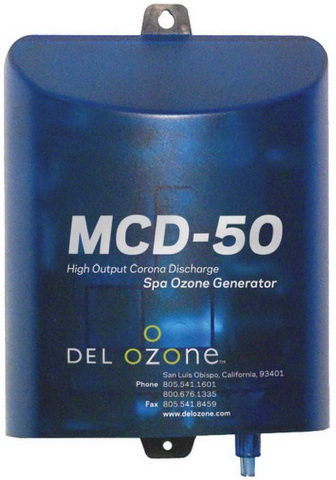
If the generator is on for 4 hours daily, it works out to about $2.50 per day @ 10.7c per kilowatt of electricity. The weekly cost is around $17.50. Power costs in your area may be more or less.
Compared to the $7.8 weekly running cost of chlorine, ozone will cost more to run and give less sanitization.
Can You Convert a Chlorine Pool To Ozone Pool?
You shouldn’t convert a chlorine pool to be exclusively sanitized by ozone. This is because ozone alone can’t sanitize a pool. Ozone doesn’t have any residual sanitization and the water is only sanitized when it passes through the ozone system. Chlorine however stays in the water is will continually fight the bugs.
So using ozone alone will put your pool at risk of algae and bacterial build-up.
Ozone generators can be used in conjunction with chlorine. This way, you get more effective sanitation.
Pros of Ozone Generators
- No odor is produced
- Ozone in the water will cause soft pool water which will be gentler on the skin.
- Ozone prevents calcium scaling on the pool walls
Cons of Ozone Generator
- Expensive installation cost
- Less effective pool cleaning
- The gasses can be dangerous if introduced in the pool.
4. Non-chlorine Shock
Non-chlorine Shock is a top choice for indoor pools. However, the chemical isn’t common for sanitizing pools regularly. Non-chlorine Shock is usually reserved for times when the pool has a high bather load and Chloramine build-up.
The chemical works by oxidizing organic contaminants, thereby increasing the effectiveness of the pool chemical.
Like ozone generators, non-chlorine shock shouldn’t be used in a pool alone. It should only be used as a weekly supplement while using a pool chemical like chlorine or bromine.
How Much Do Non-Chlorine Shock Cost?
Non-chlorine shock can be used alongside other pool chemicals, all that is required is to purchase the non-chlorine shock and add it to the pool as instructed.
Non-chlorine shocks usually cost between $15 and $50 depending on brand and size. This 6 pound non-chlorine shock from Clorox costs around $50.
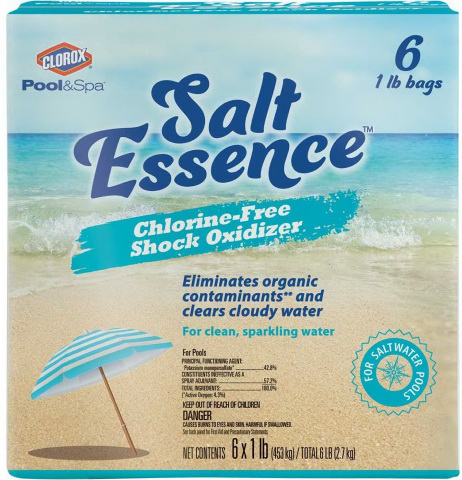
Click here to check the price >>
How Much Does Non-Chlorine Shock Cost To Run?
For a 10,000 gallon pool, you need 1 pound of non-chlorine shock weekly. At this rate, the 6 pound Clorox non-chlorine shock will last you 6 weeks. Since the shock costs around $50, that’s 49/6 = $8.20 weekly cost.
You’ll also need to supplement the non-chlorine shock with chlorine. Chlorine will cost you $7.80 weekly.
In total, you’ll be spending $16 weekly for non-chlorine shock compared to the $7.80 weekly cost of chlorine.
Can You Convert From a Chlorine Pool to Non-Chlorine Shock?
You shouldn’t convert a chlorinated pool to non-chlorine. Instead, use the non-chlorine shock to enhance the effectiveness of the chlorine.
Pros of Non-Chlorine Shock
- It is gentler on the skin
- Great for indoor pools
- It can be used with different types of pool sanitizing chemicals
Cons of Non-Chlorine Shock
- It is expensive
- It can’t be used alone. Given the running cost, this is a big disadvantage.
- Not as effective as chlorine shock
5. Mineral System
A Mineral system is a cartridge-based pool sanitation system. The system uses minerals like salt, copper and silver to sanitize the pool. Some even use a combination of different minerals.
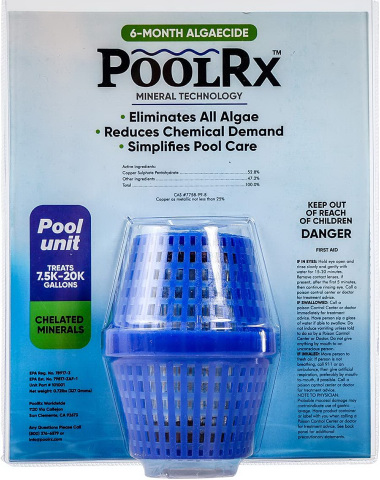
Click here to check the price >>
The system is user-friendly because it is convenient to use and can reduce pool chemical usage up to 50%. It is not a complete sanitization system though and you’ll still need chlorine.
The mineral system works by dispensing minerals into the pool water either by using the cartridge, an automatic mineral system or a mineral floater.
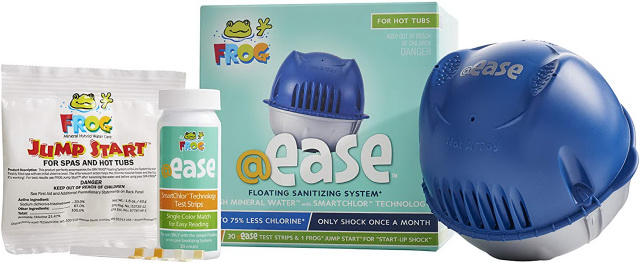
Click here to check the price >>
How Much Does Mineral System Cost?
The installment cost of mineral system is spread across the cost of the minerals and equipment needed.
This mineral system from costs under $250 and it has everything you need.
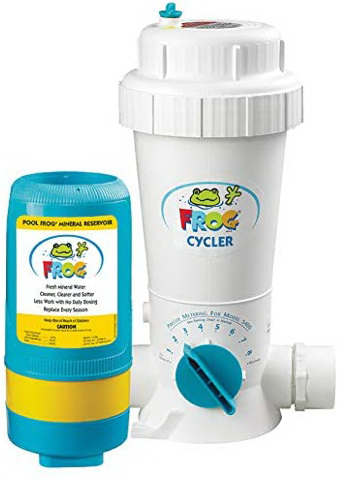
Click here to check the price >>
What is The Running Cost of Mineral System?
The running cost of a mineral system depends on the minerals being used. Pool salt for instance costs less than $10 for 40 pounds and it can last you up to 2 months.
Other minerals like copper will cost you more to run. And you’ll need to add chlorine but can use much less of it.
Can You Convert From a Chlorinated Pool to Mineral System?
You can convert from a chlorine pool to a mineral pool or any other pool for that matter. As mentioned, you’ll still need to add chlorine regularly.
Pros of Mineral System
- It is user-friendly and requires low maintenance
- Creates soft water that is gentle on the skin
- Effective against bacteria and algae
- Safe to use
Cons of Mineral System
- Installment is costly
- Mineral system cartridge replacement is costly
- Mineral systems will still need to be used with a pool chemical
Final Thoughts
Overall, chlorine is still the most effective choice for sanitising a swimming pool. It has been used for 50+ years to sanitise pools and drinking water. But if you want an alternative, we have covered the most popular options.
Ensure you consider the installment and running cost of the alternatives first and keep in mind that you’ll likely still need chlorine. The top choices for alternatives are bromine and saltwater pools.

